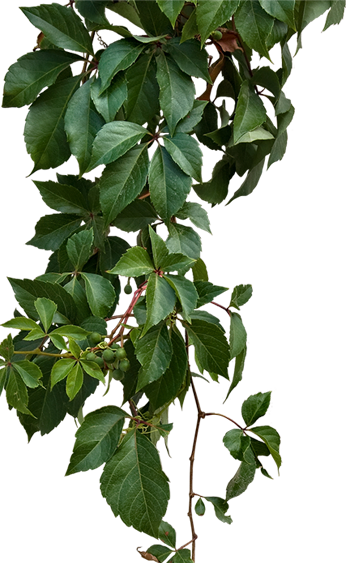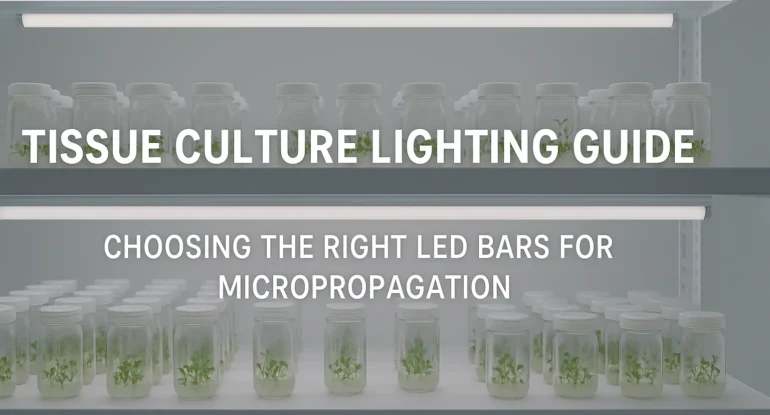
21
Jun
Best Fruits for Indoor Farming in New Zealand: A Complete Grower’s Guide
Indoor farming has surged in popularity in New Zealand thanks to rising food costs, unpredictable weather, and the desire for sustainable, homegrown produce. While leafy greens and herbs are commonly grown indoors, fruit-bearing plants can also thrive in controlled environments—with the right setup. Whether you live in a compact Auckland apartment or have a backyard greenhouse in Canterbury, growing fruit indoors offers year-round harvests, better pest control, and fresher produce at your fingertips. In this blog, we explore the best fruits for indoor farming in New Zealand, the optimal growing conditions, and how to achieve maximum yields using hydroponics, containers, and LED grow lights. Can Fruits Really Be Grown Indoors in New Zealand? Absolutely! With advancements in LED lighting, nutrient delivery systems, and compact dwarf varieties, it’s entirely possible to grow many fruit species indoors—even in New Zealand’s climate. Benefits of indoor fruit farming in NZ include: Protection from harsh weather (especially in South Island regions) Reduced pest and disease risk Year-round yields with grow lights Better water conservation with hydroponics Fresh, organic fruit without chemical pesticides Top 10 Best Fruits to Grow Indoors in New Zealand Here’s a curated list of fruits that thrive indoors, considering NZ’s seasonal conditions and indoor farming capabilities. 1. Strawberries ✅ Ideal for: Small spaces, hanging baskets, hydroponics ✅ Light: 10–12 hours/day with full-spectrum LED grow lights ✅ Variety Tip: Try “Temptation” or “Tristan” – both compact NZ varieties Strawberries are compact, fast-growing, and love well-lit environments. You can grow them in containers, vertical towers, or NFT hydroponic systems. 2. Dwarf Tomatoes ✅ Ideal for: Container gardening, greenhouses, indoor grow tents ✅ Light: 12–14 hours/day ✅ Variety Tip: “Tiny Tim”, “Patio Princess”, or NZ hybrid cherry tomatoes Although technically a fruit, tomatoes are one of the most productive and rewarding indoor crops. Use trellises or tomato cages for support. 3. Blueberries ✅ Ideal for: Cool indoor environments (especially in South Island) ✅ Light: 10–12 hours/day ✅ Variety Tip: “Northland” or “Misty” – low chill NZ-suited varieties Blueberries thrive in acidic soil and need cross-pollination, so plant at least two different cultivars. Great for pots and large containers. 4. Figs ✅ Ideal for: Greenhouses, large containers, indoor corners with good light ✅ Light: 10+ hours/day ✅ Variety Tip: “Black Mission” or “Petite Negra” dwarf fig trees Figs do surprisingly well indoors and are self-pollinating. They prefer warmth and dryness, making them perfect for well-insulated rooms. 5. Meyer Lemons ✅ Ideal for: Sunrooms, balconies, or warm indoor areas ✅ Light: 12+ hours/day ✅ Variety Tip: “Improved Meyer” – a dwarf citrus cultivar Meyer lemons are one of the easiest citrus fruits to grow indoors in NZ. They produce fragrant flowers and juicy lemons, even in pots. 6. Passionfruit (in Grow Tents or Greenhouses) ✅ Ideal for: Indoor trellis walls or vertical gardens ✅ Light: 12+ hours/day ✅ Variety Tip: “Black Passion” – NZ-adapted variety While a bit more advanced, passionfruit can grow indoors with proper vine support, humidity, and light. Ensure good airflow to prevent fungal issues. 7. Banana (Dwarf Cavendish) ✅ Ideal for: Indoor atriums, conservatories ✅ Light: 12–14 hours/day ✅ Variety Tip: “Dwarf Cavendish” – compact and ornamental While bananas require more space, you can successfully grow dwarf varieties indoors, especially in North Island regions or heated indoor spaces. 8. Pineapple ✅ Ideal for: Indoor planters, sunrooms ✅ Light: 10+ hours/day ✅ Fun Fact: You can regrow pineapples from tops Pineapples are surprisingly easy to grow indoors from crowns. They love warmth, bright light, and well-drained soil. Water only when dry. 9. Gooseberries and Currants ✅ Ideal for: Indoor patios, greenhouses ✅ Light: 8–10 hours/day ✅ Variety Tip: Choose thornless gooseberries or “Red Lake” currants These NZ-favourite berries adapt well to containers and are shade-tolerant. Use organic compost-rich soil and prune regularly. 10. Chilli Peppers (Yes, a fruit!) ✅ Ideal for: Windowsills, kitchen counters, grow tents ✅ Light: 12–14 hours/day ✅ Variety Tip: “Thai Hot”, “Apache”, or “Numex” small fruiting types Chilli plants are compact, colourful, and fast to fruit. Ideal for beginner indoor growers, especially with LED lighting support. Lighting Tips for Indoor Fruit Production in NZ Unlike leafy greens, fruiting plants require more intense light and longer exposure times. Here’s how to set up your lighting: Type of Plant Daily Light Requirement Recommended Light Type Strawberries 10–12 hrs Full-spectrum LED Tomatoes 12–14 hrs Red/blue focused LED Lemons 12+ hrs High PAR full-spectrum Blueberries 10–12 hrs White-balanced LED Use grow light timers for consistency Keep lights 30–50 cm above plant tops Ensure good heat dissipation in grow tents Hydroponics for Fruit Production Hydroponic farming is booming in NZ for its low water usage and faster yields. For indoor fruiting: Use NFT systems for strawberries Drip systems for tomatoes and peppers Deep Water Culture (DWC) for leafy fruits Always monitor pH (5.5–6.5) and EC levels weekly for optimal nutrient uptake. Indoor Fruit Farming Challenges & Solutions Challenge Solution Pollination issues Use a small brush or electric pollinator manually Light deficiency in winter Invest in high-quality LED grow lights Overwatering Use moisture meters or smart sensors Pest control indoors Introduce neem oil sprays or sticky traps Limited space Use hanging baskets, vertical shelves, or towers Best Practices for Indoor Fruit Farming in NZ Use containers with drainage holes Rotate pots weekly for even light exposure Avoid sudden temperature drops in winter Fertilise regularly with fruit-specific nutrients Join local groups like “Indoor Growers NZ” on Facebook or Reddit Sustainability & Indoor Fruit Farming Indoor fruit farming contributes to a greener future in New Zealand by: Reducing food miles Encouraging water-saving hydroponics Promoting chemical-free growth Supporting urban food security Urban centres like Auckland, Wellington, and Christchurch are already seeing increased adoption of compact indoor farms, even in high-rise apartments. Conclusion Indoor fruit farming in New Zealand is not just possible—it’s deliciously rewarding. With a bit of planning, the right lighting, and proper varieties, you can enjoy fresh strawberries, juicy lemons, and vibrant cherry tomatoes from the comfort of your home. As technology continues to make indoor

20
Jun
Indoor Gardening in New Zealand: A Complete Guide to Growing Green Indoors
As New Zealanders seek fresh produce all year round—despite unpredictable weather and limited outdoor space—indoor gardening is becoming a popular, sustainable solution. From blossoming Auckland apartments to Gisborne living rooms, urban dwellers and hobbyists are transforming their interiors into thriving green spaces. This guide covers everything you need to grow healthy indoor plants, vegetables, and herbs under LED grow lights in NZ. Why Indoor Gardening Is Thriving in New Zealand 🌱 Extend the growing season – Growing indoors allows cultivation during NZ’s wet or cold months, bypassing outdoor conditions like frost or wind . Space-efficient & urban-friendly – Ideal for apartments and homes with limited outdoor areas. Health & wellness – Indoor plants boost air quality, reduce stress, and improve well-being . Local, pesticide-free produce – Enables self-sufficiency with fresh food on-site, reducing transport emissions. Benefits and Challenges of Indoor Gardens Benefits: Controlled environment: Total control over soil, watering, nutrients, light. Diverse systems: Soil pots, hydroponic trays, aquaponics, terrariums, and green walls. Challenges: Limited natural light: Requires supplemental LED grow lights. Initial setup costs: Quality lights and infrastructure investment. Maintenance needs: Regular watering, cleaning, pest vigilance. Choosing the Right Indoor Gardening System 1. Soil-Based Pots Pros: Simple setup using potting mix and containers. Best for herbs, leafy greens, small peppers. 2. Hydroponics Grow plants without soil using water-based nutrients. Benefits include faster growth and significant water savings (up to 90%) 3. Vertical Racks & Greenwalls Ideal for apartments and limited spaces. Requires lower-heat LEDs for stacked cultivation. LED Grow Lights: Your Indoor Sunlight Why LEDs? Low-heat and energy-efficient: Save costs with long-lasting use. Customizable light spectra: Supports all plant growth stages. Lighting Basics Place LED lights ~30–60 cm above plants depending on wattage and beam angle . Provide 12–18 hours of light daily; leafy greens thrive with 14–16 hours, seedlings benefit from 16–18 hours. Step-by-Step Indoor Garden Setup Select Plants Best starter crops: lettuce, spinach, kale, basil, cherry tomatoes. Choose Your Space Use sunny windowsills, bookshelves, grow tents, or cabinets. Set Up Lighting Install full-spectrum LED lights, adjustable for blue (vegetative) and red (flowering/fruiting) spectrums. Potting & Media Use well-draining potting mix. In hydroponics, choose inert media (coco, perlite). Water & Nutrients Water when the top 2–3 cm of soil feels dry. Morning watering helps prevent fungal growth. Apply nutrient-rich solutions suitable for the chosen system. Environmental Controls Maintain 18–24°C temperature and 50–70% humidity using small fans or humidifiers. Maintenance Clean leaves, pots, and systems regularly to avoid mold. Monitor plant health—watch for yellowing, stunting, or leggy growth. Indoor Gardening Tips for NZ Tip 1: Match Lighting to Plant Needs Seedlings: 100–200 µmol/m²/s PPFD, 30–40 cm height. Leafy greens: 200–400 µmol/m²/s, 40–50 cm height. Fruiting crops: 400–600 µmol/m²/s, 50–60 cm. Tip 2: Follow a Consistent Photoperiod Seedlings: 16–18 hours light / 6–8 hours dark. Veg crops: 14–16 hours. Fruiting veggies: 12–14 hours. Tip 3: Rotate Plants for Even Growth Rotate trays and pots every few days to prevent uneven lighting spots. Tip 4: Use Reflective Surfaces Line spaces with Mylar or white paint to maximize light efficiency. Tip 5: Monitor Water Carefully Overwatering is common indoors—ensure effective drainage. Tip 6: Choose Quality, Not Price Invest in LEDs with PPE ≥ 2.0 μmol/J, good build quality, and local NZ support . Tip 7: Automate with Timers & Apps Use smart timers to maintain consistent light cycles and save effort. Health & Community Benefits Mental wellness: Enhances mood and reduces stress . Educational value: Gardening promotes learning, especially for children Local food resilience: Supports urban sustainability and food security. Top Indoor Plants for NZ Homes Low light: Snake plant, pothos, fern Medium light: Herbs, leafy greens, fairy lights Bright light: Cherry tomatoes, capsicum, chili peppers Exceptional with LED: Microgreens, seedlings Conclusion Indoor gardening in New Zealand is no longer just a hobby—it’s a movement toward sustainable living, fresh local food, and mental wellness. With thoughtful setups, quality lighting, and smart maintenance, even small spaces can produce abundant greens, veggies, and herbs year-round. Ready to start your indoor gardening journey? Explore LED grow light NZ options, choose your system, and begin planting today!

20
Jun
Indoor Farming in New Zealand: A Complete Guide to Growing Food Indoors All Year Round
Indoor farming is rapidly transforming agriculture in New Zealand. With changing climates, rising land prices, and a growing population, the demand for sustainable, space-efficient, and year-rund food production methods is higher than ever. Whether you’re a commercial grower or an enthusiastic hobbyist, indoor farming offers a smart and innovative way to grow fresh vegetables, herbs, fruits, and even microgreens—all without needing a backyard. In this comprehensive guide, we’ll explore what indoor farming is, how it’s gaining popularity in New Zealand, and how you can set up a successful system using LED grow lights, hydroponics, vertical farming techniques, and smart controls. What is Indoor Farming? Indoor farming, also known as controlled environment agriculture (CEA), is the practice of growing crops inside buildings using technologies like: LED grow lights Hydroponics or aeroponics systems Climate control Vertical farming racks Automated irrigation Unlike traditional farming, indoor farming allows you to control light, temperature, humidity, CO₂, and nutrients to create the perfect environment for plant growth. Why Indoor Farming is Gaining Momentum in New Zealand New Zealand’s agriculture sector is iconic, but it also faces challenges like: Land scarcity in urban areas Changing weather patterns High water usage Rural-to-urban shift of workforce As a result, urban farming and indoor agriculture are becoming viable solutions, especially in cities like Auckland, Wellington, and Christchurch. New Zealand’s clean energy and advanced agritech infrastructure further support this evolution. Top Benefits of Indoor Farming 1. Year-Round Crop Production Indoor farms are not weather-dependent. Whether it’s winter in Christchurch or heavy rains in Auckland, your crops continue to grow. 2. Saves Space With vertical farming setups, you can grow 10x more in the same area using stacked racks and efficient lighting. 3. Water Efficiency Hydroponics uses up to 90% less water than traditional soil farming, which is a game-changer in regions with water restrictions. 4. Pest and Disease Control Controlled indoor environments significantly reduce pest infestations and eliminate the need for harmful pesticides. 5. Proximity to Market You can grow and supply food directly in urban centres, reducing transportation costs and carbon footprint. Core Technologies Used in Indoor Farming 1. LED Grow Lights (Full-Spectrum) LED grow lights are crucial for indoor farming in NZ where natural light may be limited. Look for: Full-spectrum LED lights to mimic sunlight High PAR values for faster growth Energy-efficient models to reduce power costs Popular NZ keyword: LED grow lights for indoor farming NZ 2. Hydroponics Systems Hydroponics is a soil-free growing method using water mixed with nutrients. Systems include: Nutrient Film Technique (NFT) Deep Water Culture (DWC) Drip Systems Hydroponics is perfect for leafy greens, lettuce, basil, spinach, and strawberries. Popular NZ keyword: Hydroponic farming NZ 3. Climate Control and Sensors To ensure optimal conditions: Use humidity & temperature sensors Install automated exhaust systems Use timers and smart apps to control light cycles and watering 4. Vertical Farming Racks These modular shelving systems are ideal for maximizing indoor space. Use aluminum frames and adjustable LED lights between layers for optimal plant access. Steps to Start Your Indoor Farm in New Zealand ✅ Step 1: Define Your Goals Commercial sale, home use, or educational purpose? Choose between leafy greens, herbs, microgreens, or exotic plants. ✅ Step 2: Choose a Suitable Indoor Space Spare room, garage, basement, shipping container, or commercial warehouse Ensure access to power and ventilation ✅ Step 3: Select a Lighting System Use LED grow lights with adjustable spectrums and timers Check local NZ suppliers for affordable options ✅ Step 4: Pick a Growing Method Hydroponics (most popular in NZ) Soil-based (if you’re just starting out) Aeroponics or aquaponics for advanced growers ✅ Step 5: Install Infrastructure Light fixtures Grow trays and racks Water tanks and pumps pH and EC meters Timer switches ✅ Step 6: Start Planting and Monitor Regularly Use seeds from reputable NZ suppliers Track plant growth, water usage, and light hours Harvest frequently and reinvest in scaling Indoor Farming Business Opportunities in New Zealand The indoor farming sector is booming. Here are some trending opportunities: Microgreen production for cafes and restaurants Basil, coriander, and lettuce supply for supermarkets Urban vertical farms in Auckland apartments Tissue culture propagation units Educational hydroponic kits for schools New Zealanders are increasingly choosing locally grown, pesticide-free produce, and indoor farming helps meet this demand. Common Challenges (And How to Overcome Them) Challenge Solution High electricity bills Use energy-efficient LED grow lights with auto shut-off timers Initial investment cost Start small with a DIY hydroponic kit and grow modularly Limited technical knowledge Join indoor farming communities and follow NZ-based agritech forums Mold or algae buildup Regularly clean reservoirs and ensure good airflow Finding the right nutrients Use NZ-certified hydroponic nutrient mixes for leafy greens and herbs Indoor Farming in New Zealand: Future Outlook New Zealand is well-positioned to become a leader in smart, sustainable indoor farming. The government’s interest in food security and sustainable agriculture is accelerating adoption. Agritech companies and startups are exploring AI, IoT, and automation to further improve yield and reduce manual efforts. With smart LED lighting, efficient hydroponic systems, and a growing community of indoor growers, now is the perfect time to invest in indoor farming—whether as a business or a lifestyle. Conclusion Indoor farming isn’t just a trend—it’s the future of food production in New Zealand. From energy-efficient grow lights to smart hydroponic systems, the technology is here, and it’s more accessible than ever. Whether you’re a hobbyist or an aspiring commercial grower, you can start small, scale smart, and grow sustainably. Take the first step today. Embrace the freedom of growing food all year long—indoors, sustainably, and successfully.
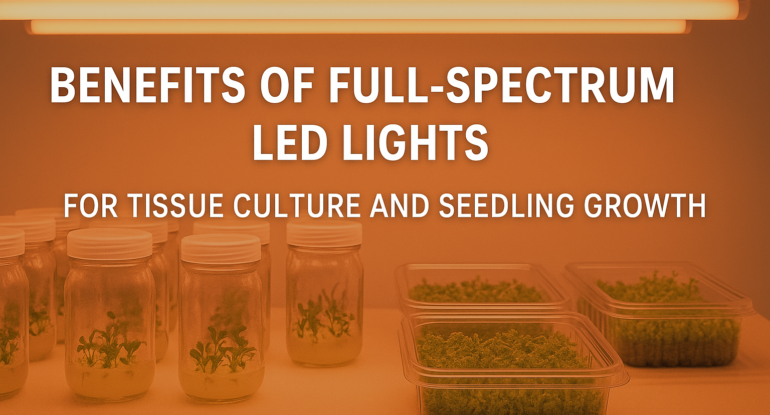
07
May
Benefits of Full-Spectrum LED Lights for Tissue Culture and Seedling Growth
The advancement of full-spectrum LED grow lights has revolutionized modern agriculture—especially for delicate processes like tissue culture and seedling development. In New Zealand, where growers, horticulturists, and research labs aim for high yield, energy efficiency, and plant uniformity, full-spectrum lighting has become an essential part of the cultivation strategy. This comprehensive guide explores the top benefits of full-spectrum LED grow lights for tissue culture and seedling growth, including light science, application strategies, energy savings, and commercial impact. What Are Full-Spectrum LED Grow Lights? Full-spectrum LED grow lights mimic natural sunlight, offering a broad range of wavelengths from ultraviolet (UV) to infrared (IR). These lights typically include: Blue Light (400–500 nm): Encourages vegetative growth and compact plant structure. Red Light (600–700 nm): Essential for root formation, flowering, and fruiting. Green Light (500–600 nm): Enhances canopy penetration. Far-Red Light (700–750 nm): Influences flowering cycles and plant elongation. UV Light (100–400 nm): Stimulates secondary metabolite production and stress tolerance. Full-spectrum lighting provides a balanced wavelength distribution, making it suitable for all plant growth stages—from explant initiation to transplant-ready seedlings. Why Full-Spectrum LEDs Are Essential in Tissue Culture Tissue culture, or micropropagation, is the process of growing plants in sterile, nutrient-rich media under controlled conditions. Lighting plays a critical role in: Callus initiation Shoot proliferation Root induction Hardening stages Key Benefits for Tissue Culture: 1. Balanced Growth with Blue and Red Light In tissue culture, explants require a fine balance of blue and red wavelengths. Full-spectrum LEDs deliver optimal ratios that: Stimulate chlorophyll synthesis Enhance photosynthetic efficiency Promote balanced root and shoot growth This is especially useful for propagating plants like bananas, orchids, strawberries, and medicinal herbs in New Zealand tissue culture labs. 2. Uniform Light Distribution Across Culture Shelves Full-spectrum LED light bars and panels are engineered to offer uniform PAR (Photosynthetically Active Radiation) across growing surfaces. This leads to: Consistent explant growth across trays Reduced photoinhibition and light stress Fewer morphological abnormalities In vertical farming racks, uniformity ensures high throughput and better yield per shelf. 3. Reduced Heat Output and Risk of Contamination Unlike traditional HPS or fluorescent lighting, full-spectrum LED lights produce minimal heat, making them ideal for sealed and sterile environments. Less heat means: Reduced contamination risks Lower cooling costs Safer handling near sensitive cultures For growers in warmer regions of NZ or in climate-controlled greenhouses, this translates to energy savings and improved lab safety. 4. Customizable Spectral Output for Research and Precision Growing Many advanced full-spectrum LEDs used in New Zealand now offer programmable spectrums, allowing labs and growers to tailor wavelengths to: Specific plant genotypes Culture stages (callus, shoot, root) Regional climate factors This is highly advantageous in plant biotechnology and academic research facilities where optimization is crucial. Benefits of Full-Spectrum LEDs for Seedling Growth Once tissue culture plants are acclimatized or when seeds germinate in nurseries, seedling growth requires different light management. Full-spectrum LEDs provide benefits such as: 5. Faster Germination and Stronger Seedlings The blue and red portions of the spectrum stimulate rapid germination, improved cell division, and sturdy stem formation. This results in: Healthier, pest-resistant seedlings Uniform canopy height Faster transplanting cycles Growers of vegetables, ornamentals, and fruit trees in NZ benefit from quicker production and higher propagation success. 6. Better Morphology and Compact Growth New Zealand’s indoor growers and hobbyists often face leggy or stretched seedlings when using poor lighting. Full-spectrum LEDs help produce: Compact, short-internode seedlings Better root-to-shoot ratio Higher survival rate during transplantation This is vital in vertical farming, greenhouses, or limited-space growing rooms. 7. Improved Nutrient Absorption and Photosynthesis Full-spectrum lighting improves the uptake of water and nutrients, thanks to higher photosynthetic rates. Resulting seedlings are: More resilient to transplant shock Quicker to enter vegetative stages More efficient in water use This helps optimize fertilizer costs and improves ROI for both commercial and small-scale growers. New Zealand Case Study: A Rotorua Seedling Nursery A commercial nursery in Rotorua replaced old metal halide lamps with programmable full-spectrum LEDs across their seedling trays. The results: 32% faster germination of lettuce and tomato seedlings 22% increase in uniformity rate 47% savings on monthly electricity costs 15% higher transplant survival These LEDs were tuned to deliver 160 µmol/m²/s PPFD, with a 16-hour photoperiod, ideal for early growth. Environmental and Economic Benefits for NZ Growers Switching to full-spectrum LED lights offers long-term advantages in the New Zealand growing climate: ✅ Energy Savings: Up to 60% less power use compared to fluorescent or HID lamps ✅ Lower Carbon Footprint: Ideal for eco-conscious and organic farms ✅ Reduced Maintenance: 50,000+ hour lifespan with minimal degradation ✅ Government Grants: Eligibility under some NZ sustainability programs For indoor growers, tissue culture labs, and vertical farms, this lighting solution reduces both operational costs and environmental impact. How to Choose the Right Full-Spectrum LED for Your Setup Whether you’re managing a commercial tissue culture lab or a small seedling nursery, consider: Feature Importance Adjustable Spectrum Tailors to crop types and stages Dimmable Output Controls intensity for delicate growth Uniform Coverage Crucial for multi-shelf or multi-tray setups IP Rating Ensures protection from humidity Certifications Look for CE, RoHS, or NZ-compliant marks Conclusion Full-spectrum LED lights offer unmatched versatility and efficiency for tissue culture and seedling production. For growers across New Zealand, from biotech labs to indoor hobbyists, these lights deliver: Faster, uniform plant growth Reduced power consumption Precise spectrum control Minimal heat and contamination risks As sustainable agriculture gains momentum in New Zealand, integrating full-spectrum LED lighting into your micropropagation or nursery setup is a step toward profitable, eco-friendly cultivation. Frequently Asked Questions (FAQs) 1. What is a full-spectrum LED grow light? Answer: A full-spectrum LED grow light emits a balanced range of wavelengths—mimicking natural sunlight—including blue, red, green, far-red, and sometimes ultraviolet (UV). It supports all stages of plant growth, from tissue culture to flowering and fruiting, making it ideal for indoor and greenhouse farming in New Zealand. 2. Are full-spectrum LEDs better than regular grow lights? Answer: Yes. Full-spectrum LEDs provide more tailored wavelengths for photosynthesis and plant development. Compared
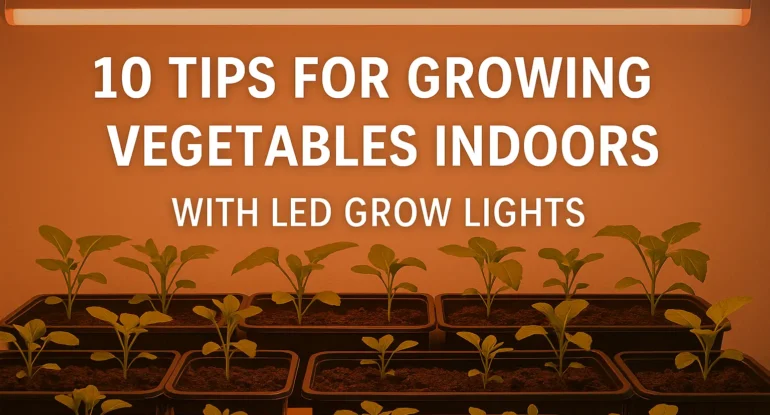
07
May
10 Tips for Growing Vegetables Indoors with LED Grow Lights (NZ Guide)
With unpredictable weather, limited garden space, and rising food costs, more New Zealanders are turning to indoor vegetable growing. Using LED grow lights, you can grow fresh vegetables year-round—whether you’re a city dweller in Auckland or a hobbyist in Dunedin. LED technology has evolved significantly, offering full-spectrum, energy-efficient lighting solutions that replicate natural sunlight. In this guide, you’ll discover 10 expert tips to grow vegetables indoors using LED grow lights, optimized for New Zealand conditions and tailored to support beginner and commercial growers alike. ✅ Why Use LED Grow Lights for Indoor Vegetable Growing? Traditional lighting methods like fluorescent or HPS bulbs are inefficient, hot, and limited in spectrum. LED grow lights, especially full-spectrum LED bars, are ideal because they: Mimic natural sunlight Emit low heat Consume less power Last over 50,000 hours Offer adjustable spectrums for different plant stages For urban gardeners, hobbyists, and hydroponic farmers in NZ, LED lighting for vegetables is a smart, sustainable investment. 🌱 Tip 1: Choose the Right Vegetables to Grow Indoors Not all vegetables thrive indoors. Start with compact, fast-growing, and low-maintenance varieties. Ideal crops include: Lettuce Spinach Kale Cherry tomatoes Basil and other herbs Radishes Peppers (Capsicum) Spring onions These crops do well in low-to-medium light environments and have short growth cycles, making them perfect for indoor setups in NZ homes or greenhouses. 💡 Tip 2: Select Full-Spectrum LED Grow Lights The best LED grow lights for vegetables are full-spectrum lights that cover the blue and red light ranges, essential for photosynthesis and fruiting. Look for: Blue light (400–500 nm): Encourages leafy growth Red light (600–700 nm): Aids flowering and fruiting PAR output (Photosynthetically Active Radiation): At least 100–300 µmol/m²/s for most vegetables Brands like Growlight NZ offer high-quality grow bars and panels tailored for the New Zealand climate and power standards. 🛠️ Tip 3: Set the Correct Light Height and Distance Too close, and you risk burning your plants. Too far, and they may stretch and become leggy. A general rule: Seedlings: 30–40 cm above plant canopy Vegetative stage: 40–50 cm Fruiting stage: 50–60 cm Adjust light distance weekly to ensure uniform coverage and healthy vertical growth. ⏱️ Tip 4: Maintain an Ideal Light Schedule Mimicking the natural photoperiod is key for indoor vegetable success. For most leafy greens and fruiting plants, follow: Seedlings: 16–18 hours of light daily Vegetative stage: 14–16 hours Flowering/fruiting stage: 12–14 hours Use an automatic timer to maintain consistency—critical for plant circadian rhythms. 💧 Tip 5: Don’t Overwater Indoors Plants grown under LEDs transpire less because there’s less heat compared to sunlight. Overwatering is one of the most common indoor growing mistakes. To avoid root rot: Use well-draining soil or coco peat Water when the top 2–3 cm of soil feels dry Consider self-watering containers or hydroponic setups for precision 🌡️ Tip 6: Maintain Optimal Temperature and Humidity LEDs produce less heat, but maintaining the right environment is still important: Ideal temperature: 18–24°C for most vegetables Humidity: 50–70% Use small fans for airflow to prevent mold or fungus For sealed grow rooms, a dehumidifier or humidifier may be helpful In colder regions of NZ, consider heat mats or insulated grow tents. 🧪 Tip 7: Use Organic or Hydroponic Nutrients Indoor vegetables still need nutrients, even in high-tech setups. Choose: Hydroponic nutrient solutions (if using hydro systems) Organic compost tea or liquid kelp for soil-based systems Follow the feed schedule—more is not better! Watch for signs of nutrient deficiency: yellowing leaves (nitrogen), poor root development (phosphorus), or leaf curling (potassium). 🪴 Tip 8: Maximise Your Space with Vertical Farming Racks Limited on space? Indoor LED grow lights pair perfectly with vertical farming systems, allowing you to: Grow more in less space Stack multiple trays or hydroponic layers Increase production for commercial growers Use reflective walls or Mylar sheets to bounce light and improve coverage. 🔄 Tip 9: Rotate Plants Regularly To promote even light distribution and growth: Rotate pots or trays every few days Ensure all sides receive balanced exposure Avoid shadowing from taller plants This helps prevent lopsided or leggy vegetable growth—common in static indoor setups. 🧼 Tip 10: Keep Equipment Clean and Well-Maintained Indoor grow setups are susceptible to mold, pests, and mineral buildup. Regular maintenance includes: Cleaning LED bars and reflectors monthly Sterilizing trays and containers between cycles Checking wiring and timers for faults Replacing filters or airflow units as needed Clean environments lead to healthier vegetables and fewer problems down the line. 🌿 Success Story: A Home Grower in Wellington After installing a 3-tier LED grow system in his garage, James from Wellington began growing lettuce, basil, and cherry tomatoes year-round. With Growlight NZ’s full-spectrum panels and automated timers, he cut his grocery costs and now supplies fresh greens to neighbors. His system uses only 250 watts—cheaper than his kettle! 🎯 Final Thoughts Growing vegetables indoors with LED grow lights is a game-changer for New Zealanders looking for fresh, local, and pesticide-free produce. Whether you’re a hobbyist or a commercial grower, you’ll benefit from: Consistent yields Space-saving setups Energy efficiency Year-round harvests With the right tools and strategies, your indoor garden can thrive—no matter the season or space. Frequently Asked Questions (FAQs) 1. What vegetables grow best indoors under LED lights? Answer: Leafy greens like lettuce, spinach, kale, and herbs (basil, parsley, coriander) are ideal. Compact varieties of tomatoes, peppers, radishes, and spring onions also thrive well indoors with proper LED lighting. 2. How many hours should I run LED grow lights for indoor vegetables? Answer: Most vegetables need 14–16 hours of light per day. Seedlings may need up to 18 hours, while fruiting crops like tomatoes benefit from 12–14 hours during flowering stages. Use timers for consistency. 3. What is the best type of LED grow light for vegetable growing? Answer: Full-spectrum LED grow lights are best as they mimic natural sunlight. They provide essential blue and red wavelengths needed for strong leafy growth, flowering, and fruiting. 4. How far should LED grow lights be from vegetable plants? Answer: Seedlings: 30–40
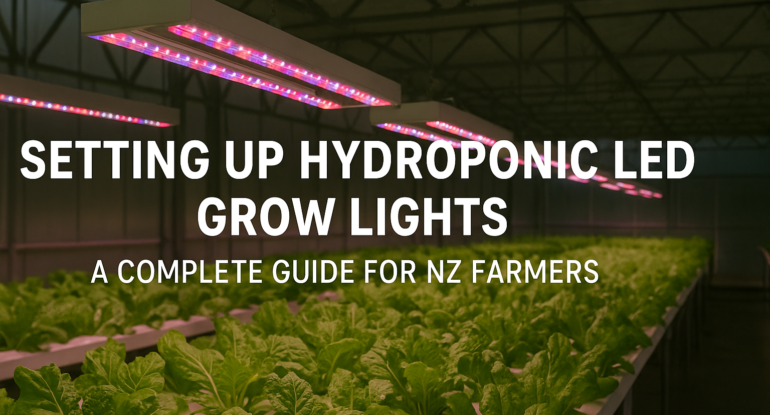
06
May
Setting Up Hydroponic LED Grow Lights: A Complete Guide for NZ Farmers
Introduction Hydroponic indoor farming is rapidly gaining traction among New Zealand farmers—offering year-round production, precise nutrient control, and higher yields per square metre. Central to its success are hydroponic LED grow lights, which deliver targeted light spectra for optimal photosynthesis, reduce energy bills, and minimize heat output. Whether you operate a small greenhouse near Auckland or a large commercial setup in Canterbury, this guide will walk you through every step of setting up hydroponic LED lighting—helping you harness the full potential of LED grow lights NZ. Benefits of Hydroponic LED Grow Lights Energy Efficiency: LEDs boast PPE (photosynthetic photon efficacy) ratings above 2.2 µmol/J for commercial-grade fixtures, translating to 40–60% lower electricity costs compared to HPS. Full-Spectrum Lighting: Many hydroponic LED grow lights offer balanced white light or tunable red/blue channels for both vegetative and flowering stages. Low Heat Output: LEDs operate cooler, allowing fixtures to hang closer to the canopy without causing heat stress—ideal for densely packed hydroponic trays. Longevity: Quality LED bars and panels are rated for 50,000+ hours, reducing replacement frequency and maintenance. Precision Control: Dimming and programmable photoperiods let you tailor light intensity and duration to specific crops, increasing yields and uniformity. By integrating hydroponic LED grow lights, NZ farmers can achieve faster growth cycles, tighter climate control, and significant savings on power and cooling infrastructure. Key Components of a Hydroponic LED Lighting System 3.1 LED Grow Lights LED Bars (9 W–17 W): Ideal for multi-tier vertical racks and narrow benches. LED Panels (300 W–600 W): Suitable for large trays and greenhouse aisles. COB/Quantum Boards: High-intensity modules for deep-canopy penetration. 3.2 Hydroponic Growing Trays and Reservoirs Nutrient Film Technique (NFT) Channels: Shallow channels for continuous nutrient flow. Deep Water Culture (DWC) Tubs: Floating rafts for leafy greens. Ebb & Flow Tables: Flood and drain systems for versatile crop choices. 3.3 Lighting Support & Suspension Adjustable Ratchet Hangers: Easy height control without tools. Hard-Mount Rails: Fixed installation for commercial greenhouses. Reflective Hoods: Increase light uniformity and focus. 3.4 Environmental Controls Climate Controllers: Automated temperature, humidity, and CO₂ regulation. Timers & Dimmers: Set precise photoperiods (e.g., 16/8 veg, 12/12 bloom). Ventilation & Cooling Fans: Maintain optimal ambient temperatures, especially in NZ summers. Choosing the Right LED Grow Light for NZ Conditions 4.1 Spectrum and PPFD Requirements Photosynthetically Active Radiation (PAR) spans 400–700 nm. Aim for PPFD (µmol/m²/s) targets: Leafy greens: 300–400 µmol/m²/s Herbs: 400–600 µmol/m²/s Fruit/flower crops: 600–900 µmol/m²/s 4.2 Wattage and Efficiency (PPE) Choose fixtures with PPE ≥ 2.0 µmol/J for hobbyist setups; ≥ 2.2 µmol/J for commercial operations. Calculate required wattage: TotalWattage=DesiredPPFD×CanopyArea(m2)÷PPETotal Wattage = Desired PPFD × Canopy Area (m²) ÷ PPETotalWattage=DesiredPPFD× CanopyArea(m2)÷PPE 4.3 Coverage Area and Uniformity Check manufacturer’s coverage chart for hang height vs. footprint. Ensure uniform PPFD across trays—avoid hotspots by staggering fixtures or using multiple LED bars. 5. Step-by-Step Installation Guide 5.1 Site Preparation Clean & Sanitize: Ensure trays, walls, and benches are free of pathogens. Layout Planning: Map tray positions, walkway space, and service access. Electrical Check: Verify circuits can handle the load; install dedicated lines if necessary. 5.2 Mounting and Placement of LED Lights Measure Canopy Area: Determine length and width to calculate number of fixtures. Hang Lights: Use ratchet hangers at recommended heights (see Section 3.3). Align Fixtures: Overlap coverage zones by 10–15% to ensure uniformity. 5.3 Connecting to Power and Controls Group Fixtures: Wire panels/bars to common dimmer/timer channels. Install Timers/Dimmers: Program photoperiods and intensity ramps (e.g., dawn/dusk sim). Test Circuits: Turn on each zone individually; verify proper operation. 5.4 Setting Photoperiod and Intensity Vegetative Stage: 16–18 hours ON, 6–8 hours OFF Flowering Stage: 12 hours ON, 12 hours OFF Dimming: Start seedlings at 50% intensity, ramp up by 10% increments over a week. 6. Optimizing Light for Different Crops 6.1 Leafy Greens and Herbs Light Level: 300–400 µmol/m²/s Fixture Recommendation: 17 W LED bars spaced every 30 cm for narrow trays. 6.2 Fruit-Bearing and Flowering Crops Light Level: 600–800 µmol/m²/s Fixture Recommendation: 600 W panels hung 25 cm above canopy; supplement with red spectrum during bloom. 6.3 Seedlings and Clones Light Level: 100–200 µmol/m²/s Fixture Recommendation: Low-wattage panels or under-rack LED bars, dimmed to ~50%. 7. Maintenance & Troubleshooting 7.1 Cleaning and Inspection Bi-monthly: Wipe down LED lens covers and heatsinks to remove dust and humidity residue. Quarterly: Check wiring connections for corrosion or wear. 7.2 Monitoring Light Output Use a PAR meter to log PPFD readings at canopy level. Track changes—if PPFD drops >15%, clean fixtures or adjust hang height. Issue Possible Cause Solution Uneven Growth Light hotspots/low zones Reposition fixtures; add reflectors Leaf Bleaching or Curling Excessive intensity or heat Raise fixtures; lower PPFD by 10–20% Fixture Shutdowns Overheating or electrical trip Inspect cooling fans; upgrade circuit breakers 8. New Zealand–Specific Considerations 8.1 Seasonal Energy Costs Winter (May–Aug): Short daylight leads to longer run times—optimize schedules to avoid peak–rate hours. Summer (Nov–Feb): Increased ambient temperature may require additional cooling—use LEDs’ low heat output to your advantage. 8.2 Local Suppliers and Warranty Growlight.co.nz stocks Nexsel Tech fixtures with NZ warranty and local technical support. Lead Times: 3–5 business days for major centers; allow 7–10 days for rural deliveries. 8.3 Regulatory Compliance Ensure CE and RoHS certifications for electrical safety. Follow NZ’s Electrical (Safety) Regulations when installing commercial circuits. 9. Maximizing ROI and Sustainability Energy Savings: LEDs can cut electricity usage by 40–60%, yielding payback in 12–18 months on commercial panels. Water Efficiency: Hydroponic systems use up to 90% less water; combined with LED lighting, this boosts your sustainability credentials. Carbon Footprint: Lower energy draw reduces greenhouse gas emissions—a key consideration for NZ’s growing export market. 10. Conclusion & Next Steps Implementing a hydroponic LED grow light system is a strategic investment for New Zealand farmers—delivering consistent yields, reduced operating costs, and year-round production. Follow this guide to: Select fixtures with the right spectrum, PPE, and coverage for your crop. Install with precision—align fixtures, program timers, and ensure proper ventilation. Maintain regularly—clean, monitor PPFD, and troubleshoot promptly. Optimize schedules seasonally to manage energy costs in

